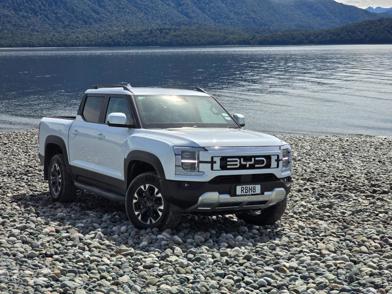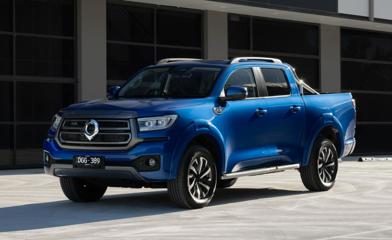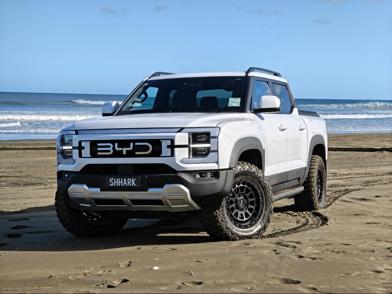What are these new cars all about then?
The Fangchengbao (which translates as "Formula Leopard" in English) Bao 5 and Bao 8 are ladder-chassis SUVs made by Chinese company BYD that boast serious off-road running gear and even more serious luxury packed inside. This description may make it tempting to think of them as Chinese Range Rover-equivalents, that comparison only lasts as long as it takes you to absorb the massive amounts of tech that is also jammed into them.
Everything from 50-inch windscreen-projected augmented reality head-up displays, advanced Level 2 semi-autonomous assist that utilise LiDAR, and even optional onboard drones are packed into the Fangchengbaos, giving them a far wider appeal than just off-road ability will do.
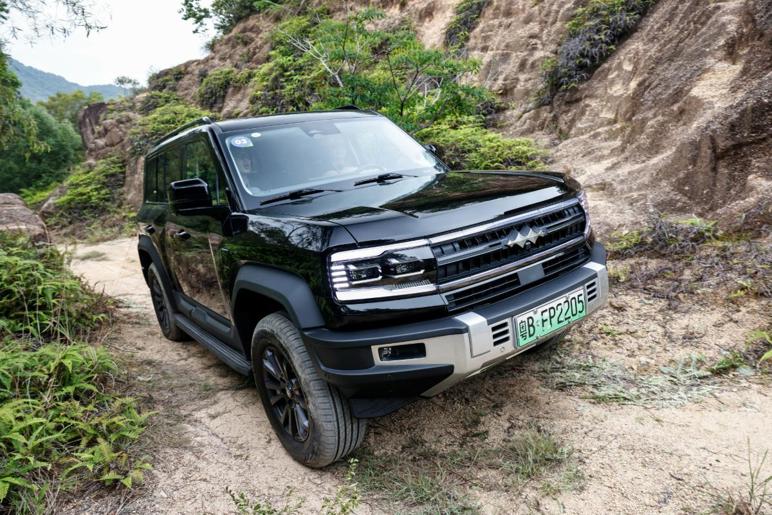
While the Fangchengbao name won't come to New Zealand, the cars look increasingly likely to as a part of BYD's local Denza line up, with the Bao 5 and Bao 8 being branded as the Denza B5 and B8 in export markets.
The B5 is the smaller of the two, being a mid-size SUV that clocks in at 4890mm in length and 2890kg in weight. Sitting on the same platform as the Shark 6 ute, the B5 is powered by 145kW 1.5-litre four-cylinder turbo petrol engine, which may seem modest, but as you have probably guessed - there’s more.
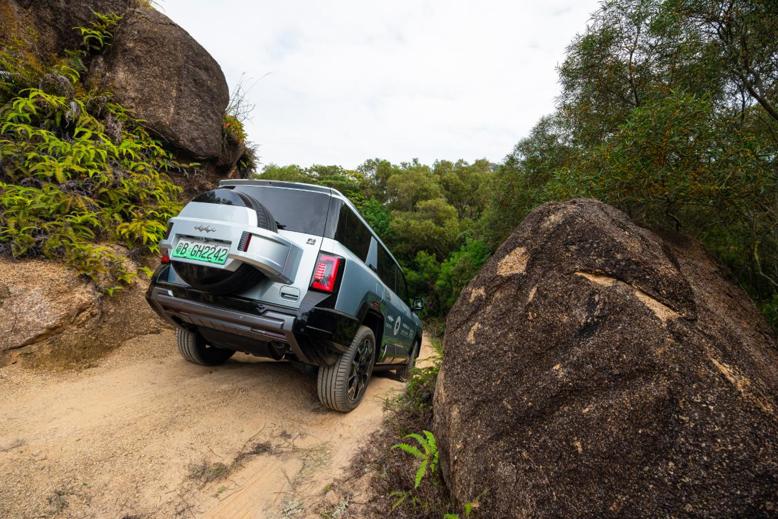
A lot more, actually - more than the Shark 6 even; the B5 also packs a 31.8kWh LFP Blade battery and a pair of electric motors that bump the combined output up to a hefty 505kW of power and 760Nm of torque.
The B5's interior is dominated by screens, with two 12.3-inch examples flanking the huge 15.6-inch central display, and in case that isn’t enough for you, some higher-end models also get a truly enormous 50-inch augmented reality heads-up display (which, sadly, we didn’t get to try…).
The centre console features two wireless charging pads and an array of switches for the various off-road and powertrain features, while behind the cupholders below a chilled (or heated) centre cubby hides under the armrest.
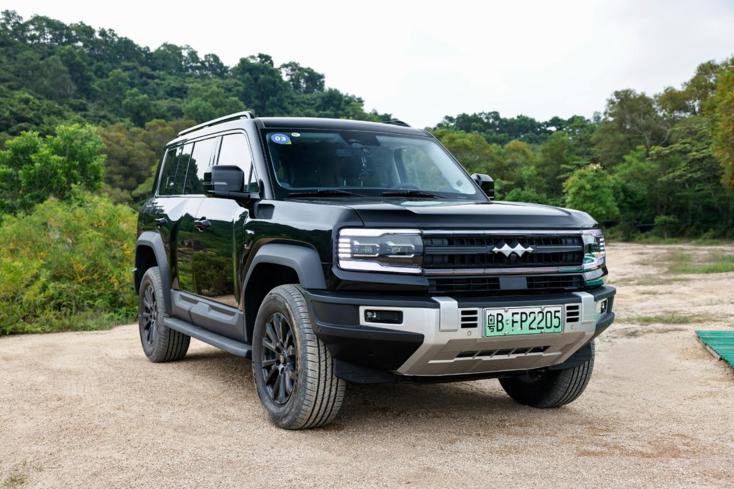
The plush and comfortable seats are wrapped in either faux leather, Nappa leather or a mix of leather and suede (again, depending on the model), while interior space is cavernous, helped by the fact that, rather than jam a third row of seats into the B5, BYD has opted to leave that to the larger alternatives and keep the B5 a 5-seater.
Given BYD's track record of extremely aggressive pricing "considerably cheaper than a Range Rover" wouldn't be a terrible guess.
If, however, you demand 7 seats, then there is the B8. The larger B8 also shares the Shark’s underpinnings but bumps things up to use a 200kW 2.0-litre version of the Dual Mode Offroad (DMO) powertrain that produces a combined output of 550kW/760Nm.
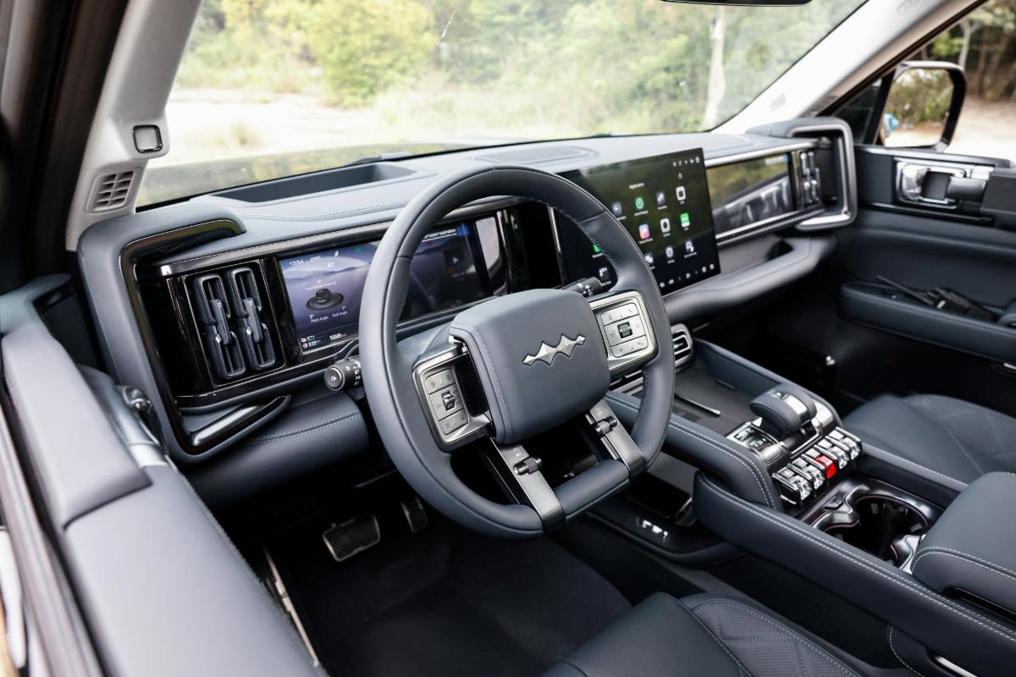
Luxury is also upped in the B8, being not too far off that of the super-luxo Yanwang U8, with an enormous 17.3-inch central infotainment screen flanked by a 12.3-inch digital display for the driver and another 12.3-inch touchscreen for the passenger, while the 50-inch HUD is also available too.
The B8 is available in five, six or seven-seat variants and also features LiDAR sensors with a “navigate on Autopilot” system available in its home market.
How much are they?

Well, that we don't know yet, as BYD NZ is a long way from confirming if they will even be offered here, let alone announcing pricing.
The B5's 505kW/760Nm powertrain is good enough to punch it to 100km/h in 4.8 seconds on the road, while that the fat torque makes it impressively flexible off the tarmac
The company has confirmed that Denza is definitely coming, and being BYD's luxury brand will likely command more money that the current offerings, but given BYD's track record of extremely aggressive pricing "considerably cheaper than a Range Rover" wouldn't be a terrible guess. Whether or not "cheaper than a Defender" can be achieved remains to be seen.
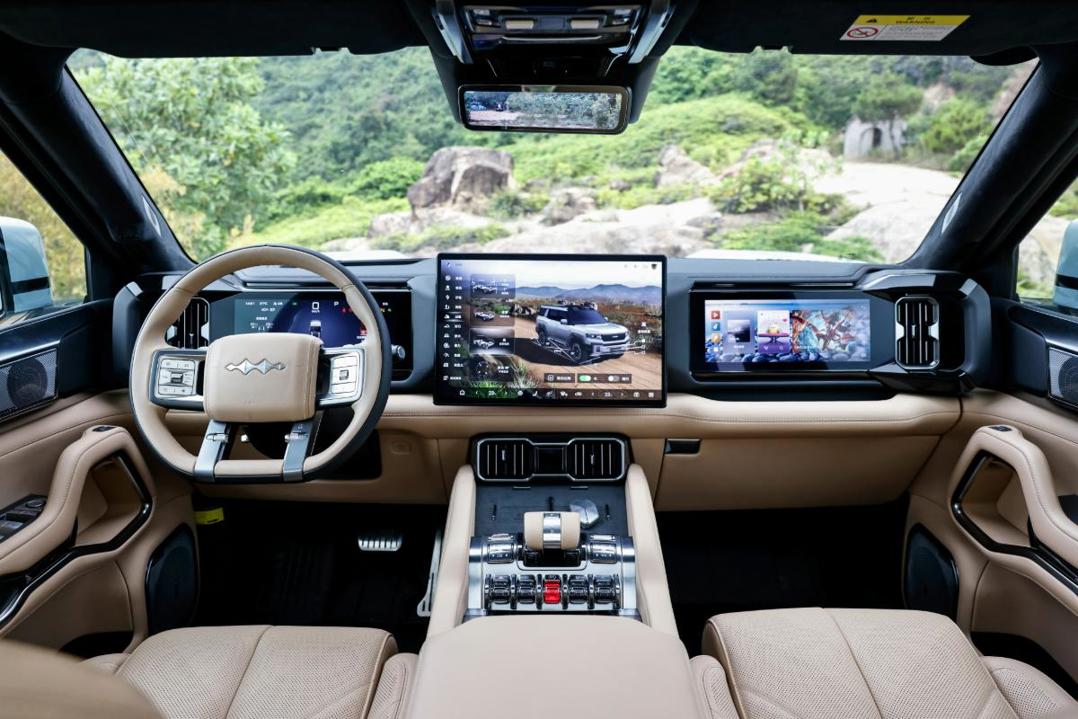
What are they like to drive?
A strange blend of supremely capable off road and brutally fast on it.
While our “test drive” of BYD product was in a car park (albeit a large one with a wonderfully twisty circuit set up in it), our off-roading in the Fangchengbaos was… similarly ‘different’ to what we are used to here - around a quad bike track!
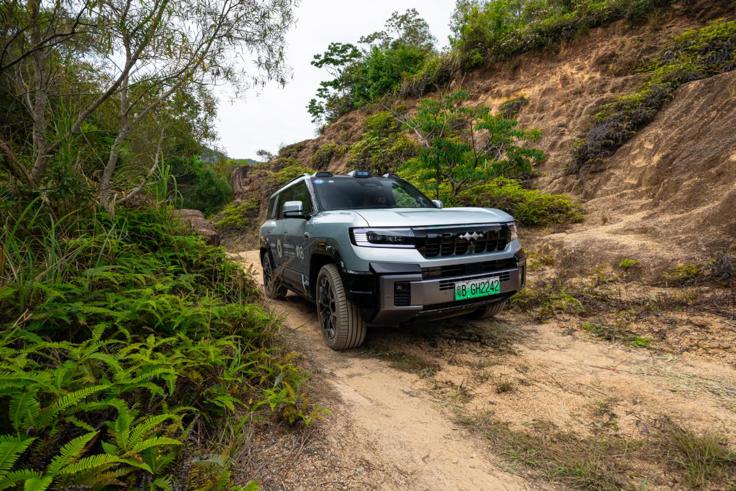
Tight (very tight in some places), twisty and with some surprisingly steep inclines, it was actually a more interesting and, more importantly, informative off-road test than the location might suggest, highlighting both ladder chassis SUVs’ low speed crawling and impressive ground clearance.
The B5’s plug-in electric powertrain is not only every bit as slick and seamless as the Shark 6’s, but even exceeds the utes effortless performance thanks to the beefier outputs.
The B5's 505kW/760Nm powertrain is good enough to punch it to 100km/h in 4.8 seconds on the road, while that the fat torque makes it impressively flexible off the tarmac, and its approach and departure angles of 35 degrees and 32 degrees respectively, and 220mm ground clearance saw it make short work of the more challenging parts of our off-road course.
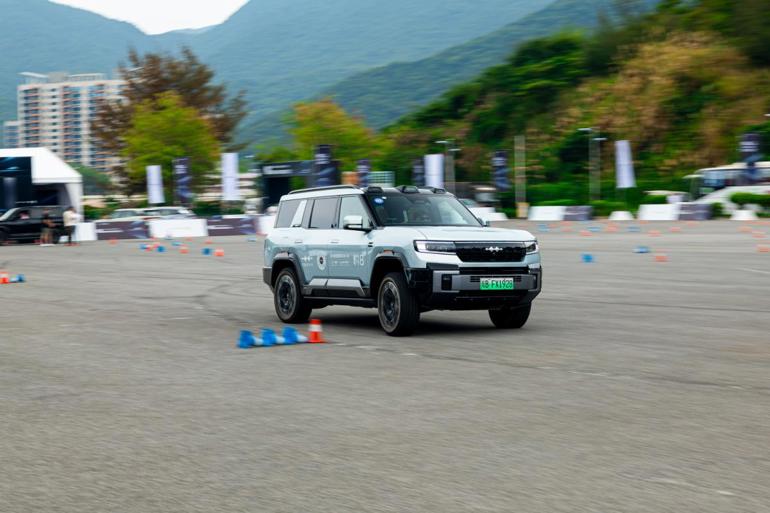
The B5’s plug-in electric powertrain is not only every bit as slick and seamless as the Shark 6’s, but even exceeds the utes effortless performance thanks to the beefier outputs, while its ability to crawl relentlessly up hills thanks to the big torque and three lockable differentials makes it feel nigh-on unstoppable off road.
As the B8 is larger (5195mm long) and heavier (3305kg) than the B5 performance is relatively similar, despite the B8’s extra power, with a 0 to 100 of 4.8 seconds for the B8 equalling that of the B5.
Likewise, off road performance is similar, although the course felt noticeably tighter in the larger vehicle, however the B8 does boast an air suspension system that can wind ground clearance up to an enormous 310mm.
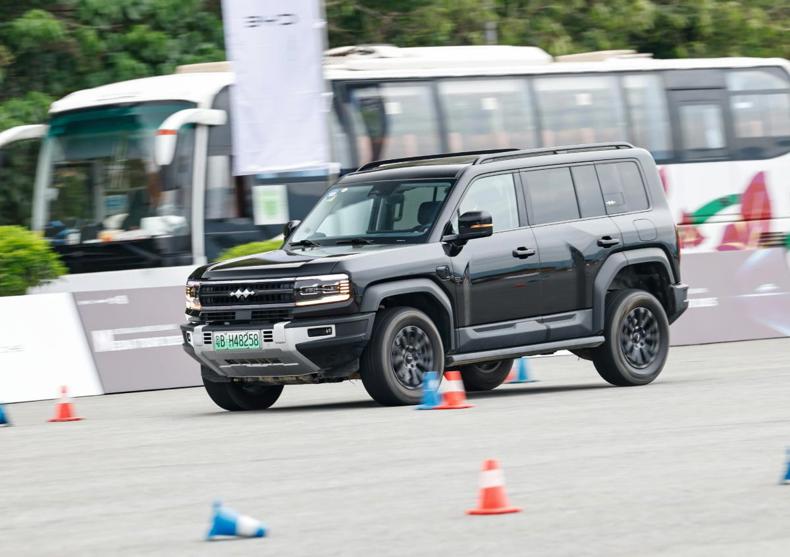
Both the B5 and B8 feature the Yangwang U8’s party trick of an automated tank turn. Similar to the Mercedes-Benz G 580 - but slower and not as violent - the Chinese SUVs can turn 360 degrees on the spot to get in, out or around tough spaces.
Both are extremely high quality and vastly capable off-roaders that would hold a lot of appeal to local buyers wanting Land Rover ability and Range Rover luxury at a lower price.
While they were impressive on the off-road track, a brief run around the car park course proved what we largely suspected (about the B8, at least - I didn’t get to drive the B5 at the track) in that they are very softly sprung, with lots of body roll and heavy nose dive under emergency braking. It’s actually very well controlled and telegraphed, but we would imagine a bit of localised suspension tuning would be on the cards to stiffen things up a bit for local tastes.
What’s the pick of the range?
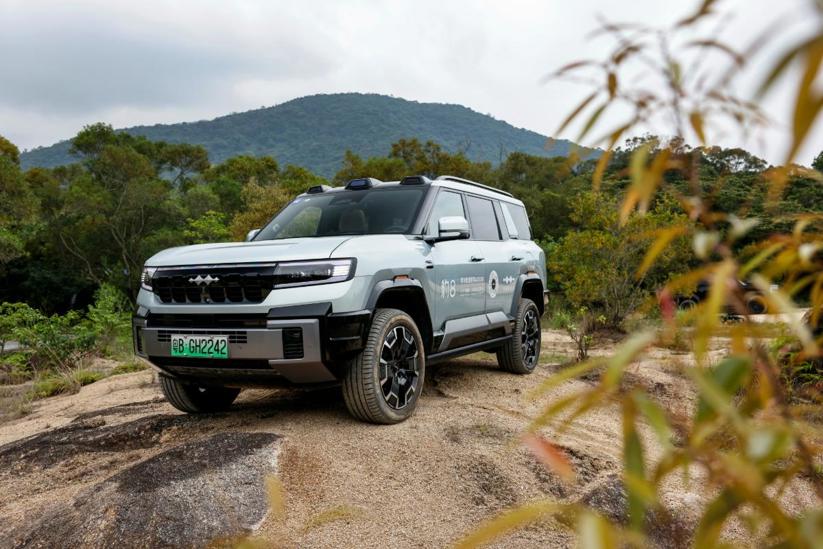
Being the smallest of the vehicles we drove (we also drove the enormous Yangwang U8, but more on that later) made the B5 far and away the best on the narrow track, while its ride quality was also clearly the pick of the bunch too.
While (in my opinion at least) the B8 was the more handsome of the two, the B5 was better to drive.
What other cars should I consider?
If they both make it here, it really does depend on pricing. Both are extremely high quality and vastly capable off-roaders that would hold a lot of appeal to local buyers wanting Land Rover ability and Range Rover luxury at a lower price.
How much lower that price is will depend on whether we will talk about them as realistic Mercedes-Benz GLE, Audi Q7 and BMW X5 competitors or even an alternative to a high-spec Ford Everest. After all, the Everest Platinum is a $92k vehicle, remember.

















